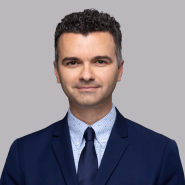Ex Parte Freeman
- July 21, 2011
- Blog Post
Associated People
In Ex Parte Freeman (Appeal No. 2009-011632 of Application No. 11/235,344), one of the issues before the Board was whether the Examiner erred in rejecting Claims 1-8 under 35 U.S.C. §101. In this case, the Board affirmed the Examiner’s §101 rejection.
Independent Claim 1 recited the following: A system for designing, estimating and scheduling building construction, comprising: a three dimensional design system that generates three dimensional design data using one or more elements in a spatial tree structure; one or more recipes associated with each element, each recipe having one or more associated method components, each method component having one or more associated resource components; a cost estimate system generating cost estimate data using the recipes; a schedule system generating schedule data using the recipes; and an estimate system applying one or more variances to one or more of the recipes, methods or resources.
In rejecting Claim 1 under 35 U.S.C. §101, the Examiner asserted that since Appellants’ specification disclosed that the claimed “systems” can be construed as merely software, Claim 1 is directed to non-statutory subject matter.
In response, Appellants contended that the Examiner improperly introduced limitations from the specification into the claims, and that while the specification did state that a system can be implemented in hardware, software, or a suitable combination of hardware and software, the specification did not state that the claimed invention can be performed using only software.
Further, Appellants noted that software code cannot perform any of the “generating” of Claim 1, unless the software code is operating on a processor. Thus, Appellants concluded that since the function of “generating” software code in the claimed “systems” amounts to software operating on a processor, Claim 1 is directed to statutory subject matter under §101.
The Board analyzed Appellants’ specification, which stated that “system 200 can be implemented in hardware, software, or a suitable combination of hardware and software, and can be one or more software systems operating on a general purpose processing platform.” The specification also noted that “[i]n one exemplary embodiment, a software system can include one or more lines of code, subroutines, procedures, branches, routines, user readable code, machine readable code, source code, object code, …”
Moreover, Appellants’ specification indicated that “system 1200 includes materials estimate system 216 and design phase system 1202, variance estimating system 1204, alternate material system 1206 and recipe interface system 1208, each of which can be implemented in hardware, software, or a suitable combination of hardware and software, and which can be one or more software systems operating on a general purpose processing platform.”
The Board found that Claim 1 may be construed solely as software because the claim recites “[a] system for designing, estimating and scheduling building construction, comprising: a three dimensional design system … a cost estimate system … a schedule system … and an estimate system,” which, as described in Appellants’ specification, may be construed as software systems that include one or more lines of code, subroutines, procedures, branches, routines, user readable code, machine readable code, source code, object code, etc.
The Board also noted that since the software of Claim 1 is not embodied on a computer-readable media, it represents computer listings per se, which are incapable of causing functional change in a computer. Based on the aforementioned analysis, the Board affirmed the Examiner’s position that Claims 1-8 are directed to non-statutory subject matter.










 Counseling & Strategic Advice
Counseling & Strategic Advice IP Transactions
IP Transactions Litigation
Litigation PTAB Proceedings
PTAB Proceedings Start-Up
Start-Up Technology Transfer
Technology Transfer Trademark & Designs
Trademark & Designs U.S. Patent Procurement (Application Drafting & Prosecution)
U.S. Patent Procurement (Application Drafting & Prosecution)








